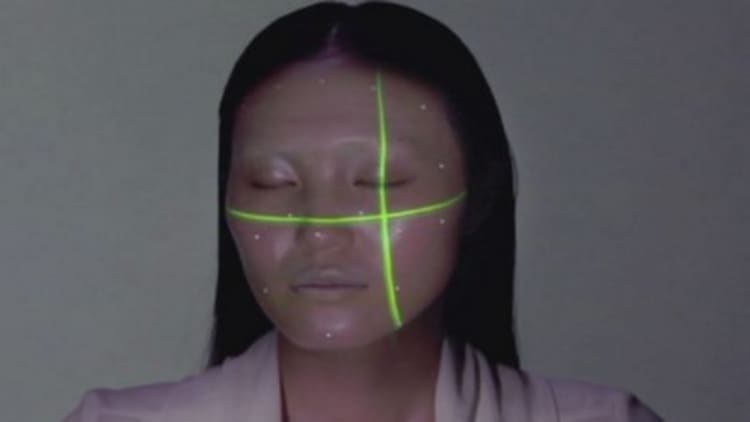
Think of the Matrix, out of this world images and videos that might be hard to comprehend at first. That's projection mapping or the process of putting a video on top of a live environment or subject.
One day in the future, projection mapping might allow consumers to see what a tattoo looks like before getting one, or trying on an outfit without getting undressed. But don't expect the option anytime soon. Like other augmented reality technologies, it may be years away before we see a real integration for the average consumer, said Jeremy Rosenberg, head of digital at Allison & Partners.
"It's a technique that has been in use for a while but in the last few years has become more common. Artistic performances, stage shows and advertisers have been using it to expand their experience beyond what could traditionally be accomplished with a flat screen," Rosenberg said.
Read More Futuristic heads-up display for your car dashboard
Projection-mapping artist, Nobumichi Asai, developed the electronic make-up technique based on prior work of transforming images onto buildings, cars and other large objects. The electronic makeup is a combination of real-time face tracking and projection mapping of a model's face.
"Projection mapping can happen virtually anywhere, it's like augmented reality in that all it needs is the data and a display. But because of the techniques, it also needs the right conditions. 3-D scanning of the projected surface and a dark enough environment and bright enough light source are all needed to create a realistic and believable experience," Rosenberg said.
Read More Oculus Rift said to be pitching Hollywood
But what are the right conditions? For now, the average consumer may just have to sit and watch. Marvel Entertainment recently launched an 85-city tour over the next two years. One highlight of the show is the use of .
"I could see applications for this type of tech in Google Glass or something more like Oculus Rift, where the environment is mapped in real time, and then fed into a heads up display or virtual reality goggles," Rosenberg said.
—By CNBC's Christina Medici Scolaro

